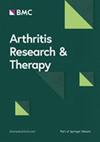Investigation of ferroptosis-associated molecular subtypes and immunological characteristics in lupus nephritis based on artificial neural network learning
IF 4.9
2区 医学
Q1 Medicine
引用次数: 0
Abstract
Lupus nephritis (LN) is a severe complication of systemic lupus erythematosus (SLE) with poor treatment outcomes. The role and underlying mechanisms of ferroptosis in LN remain largely unknown. We aimed to explore ferroptosis-related molecular subtypes and assess their prognostic value in LN patients. Molecular subtypes were classified on the basis of differentially expressed ferroptosis-related genes (FRGs) via the Consensus ClusterPlus package. The enriched functions and pathways, immune infiltrating levels, immune scores, and immune checkpoints were compared between the subgroups. A scoring algorithm based on the subtype-specific feature genes identified by artificial neural network machine learning, referred to as the NeuraLN, was established, and its immunological features, clinical value, and predictive value were evaluated in patients with LN. Finally, immunohistochemical analysis was performed to validate the expression and role of feature genes in glomerular tissues from LN patients and controls. A total of 10 differentially expressed FRGs were identified, most of which showed significant correlation. Based on the 10 FRGs, LN patients were classified into two ferroptosis subtypes, which exhibited significant differences in immune cell abundances, immune scores, and immune checkpoint expression. A NeuraLN-related protective model was established based on nine subtype-specific genes, and it exhibited a robustly predictive value in LN. The nomogram and calibration curves demonstrated the clinical benefits of the protective model. The high-NeuraLN group was closely associated with immune activation. Clinical specimens demonstrated the alterations of ALB, BHMT, GAMT, GSTA1, and HAO2 were in accordance with bioinformatics analysis results, GSTA1 and BHMT were negatively correlated with the severity of LN. The classification of ferroptosis subtypes and the establishment of a protective model may form a foundation for the personalized treatment of LN patients.基于人工神经网络学习的狼疮性肾炎铁蛋白沉积相关分子亚型和免疫学特征研究
狼疮性肾炎(LN)是系统性红斑狼疮(SLE)的一种严重并发症,治疗效果不佳。铁蛋白沉积在狼疮性肾炎中的作用和潜在机制在很大程度上仍不为人所知。我们的目的是探索与铁蛋白沉积相关的分子亚型,并评估它们在LN患者中的预后价值。通过 Consensus ClusterPlus 软件包,根据差异表达的铁中毒相关基因(FRGs)对分子亚型进行了分类。比较了亚组之间的富集功能和通路、免疫浸润水平、免疫评分和免疫检查点。建立了基于人工神经网络机器学习识别的亚型特异性特征基因的评分算法,称为 NeuraLN,并评估了其在 LN 患者中的免疫学特征、临床价值和预测价值。最后,通过免疫组化分析验证了特征基因在 LN 患者和对照组肾小球组织中的表达和作用。结果共发现了 10 个表达不同的 FRGs,其中大部分都有显著的相关性。根据这 10 个 FRGs,LN 患者被分为两种铁变态反应亚型,这两种亚型在免疫细胞丰度、免疫评分和免疫检查点表达方面存在显著差异。根据九个亚型特异性基因建立了 NeuraLN 相关保护模型,该模型对 LN 具有很高的预测价值。提名图和校准曲线证明了该保护模型的临床益处。高NeuraLN组与免疫激活密切相关。临床标本显示 ALB、BHMT、GAMT、GSTA1 和 HAO2 的改变与生物信息学分析结果一致,GSTA1 和 BHMT 与 LN 的严重程度呈负相关。铁锈色素沉着亚型的分类和保护模型的建立可为LN患者的个性化治疗奠定基础。
本文章由计算机程序翻译,如有差异,请以英文原文为准。
求助全文
约1分钟内获得全文
求助全文
来源期刊

Arthritis Research & Therapy
RHEUMATOLOGY-
CiteScore
8.60
自引率
2.00%
发文量
261
审稿时长
14 weeks
期刊介绍:
Established in 1999, Arthritis Research and Therapy is an international, open access, peer-reviewed journal, publishing original articles in the area of musculoskeletal research and therapy as well as, reviews, commentaries and reports. A major focus of the journal is on the immunologic processes leading to inflammation, damage and repair as they relate to autoimmune rheumatic and musculoskeletal conditions, and which inform the translation of this knowledge into advances in clinical care. Original basic, translational and clinical research is considered for publication along with results of early and late phase therapeutic trials, especially as they pertain to the underpinning science that informs clinical observations in interventional studies.
 求助内容:
求助内容: 应助结果提醒方式:
应助结果提醒方式:


